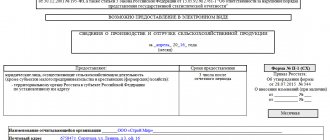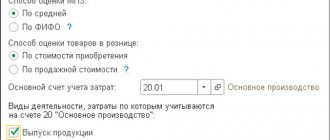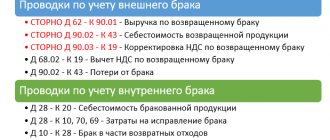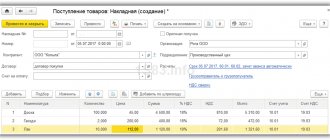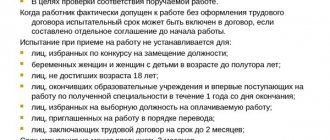During work, sometimes unpleasant incidents occur with consequences of varying severity, as a result of which people suffer. What should the employer do to ensure that this does not happen again in the future, and that this particular incident does not threaten him with serious losses and complications in his work? What can an injured worker expect? The answers are in Chapter 36 of the Labor Code of the Russian Federation, Government Decree No. 653 of August 31, 2002, and in this article.
Question: How to determine the degree of guilt of an employee in the event of an accident at work? View answer
What is considered an industrial accident?
An industrial accident occurs when, as a result of an unforeseen combination of circumstances or incorrect actions, people are injured. The accident is related to working time, place and professional duties, and one of these three factors is sufficient.
How to investigate a fatal accident at work ?
If as a result of the event:
- the worker has lost his ability to work permanently or temporarily, even for one day;
- he will now have to look for a job with different working conditions;
- something irreparable happened and someone died,
then such a case requires an investigation regulated by law and appropriate documentation.
IMPORTANT! The employer has absolute and unconditional responsibility for the life and health of employees by ensuring safe working conditions.
Classification of accidents from the point of view of investigation
IMPORTANT! Recommendations for conducting an investigation of an industrial accident from ConsultantPlus are available here
Each accident must be investigated, which is documented in accordance with the law. The degree of harm caused to the victim’s health must be indicated. Since this document will have force and further legal consequences, the severity of the case cannot be indicated arbitrarily. There is a medical examination for this. The legislative basis is the already mentioned order of the Ministry of Health of the Russian Federation No. 160.
He does not consider the possible causes of a work injury, paying attention only to two characteristics of the incident:
- to what extent the employee’s health was damaged and whether the damage affected the course of existing chronic diseases;
- how long this damage will persist over time, that is, whether the consequences for work ability will be permanent or irreversible.
IMPORTANT! Any of these signs, even in the singular, is qualifying for establishing the degree of severity.
According to this principle, all consequences of industrial injuries are divided into mild and severe.
Not heavy means light
The leading principle in this division is the principle of exclusion. The order regulates severe NS, all others are automatically classified as mild. Let's consider what the Ministry of Health means by the serious consequences of industrial injuries.
A severe degree of health damage due to work-related illness implies a sharp disruption of the normal state, which causes loss of ability to work for more than 1 month, possibly with lifelong consequences (disability).
FOR YOUR INFORMATION! The first sign of the undoubted severity of the case is a threat to the employee’s life due to damage to health. If, due to his injuries, he theoretically could have died, then the case will definitely be considered serious, even if help was provided on time and the person remained alive.
A special table in this Order describes the possible severe consequences of an industrial accident.
3 degrees of damage severity
Severe consequences are divided into 3 stages in descending order of the danger of bodily injury and the irreversibility of their consequences:
- Damage that was initially caused by shock, hemorrhage (blood loss), problems with vital organs (liver, kidneys, lungs, heart, cardiovascular and central nervous system). NS is considered severe, even if a person recovers fairly quickly from such injuries.
- Delayed consequences - do not appear immediately, but are identified by an ambulance doctor, emergency room, intensive care unit, etc. Examples include skull fractures and wounds, spinal injuries, organ ruptures, miscarriage during pregnancy, burns affecting more than 15% of the body, and other severe injuries.
- Severe consequences, irreversible, but not life-threatening, for example:
- blindness (in 1 or both eyes);
- numbness and/or deafness;
- loss or cessation of functioning of any organ;
- disfigurement (facial trauma);
- mental disorders.
A special case
Sometimes the injury itself is not so serious that it may be considered severe. But it becomes a catalyst for processes that cannot be stopped, and they can lead to death. In such a situation, NS is also considered severe.
An example is the unfortunate case of singer Anna German, who was in a car accident. Having received many fractures, she suffered for 15 years from severe pain, thrombophlebitis and ultimately died from sarcoma - cancer in the bones. A forensic examination proved that all these problems occurred as a result of the injury.
Can an employer finance preventative measures to reduce accident insurance premiums ?
An unfortunate incident or an accident?
Before you begin to draw up the appropriate documentation, you need to find out whether the incident can be classified as an industrial accident.
Completed sample report on an industrial accident.
A specially created commission, having studied the causes, place and time of the incident, draws a conclusion about its connection with production, setting them out in the main document regarding accidents - an act of form N-1.
The following verdict options are possible:
- Accident related to work. To do this, the connection between the disaster and work activity must be clarified and documented or confirmed by witness testimony.
Relationship with working hours:- the accident occurred during working hours, including lunch breaks, preparation for work and completion of work;
when working overtime for the benefit of the company;
- during periods between shifts or shifts.
Connection to the scene:
- on the way to work and back (if enterprise transport delivers employees);
- on a business trip and on the way there and back;
- when traveling by personal transport on business (if this is noted in the contract).
Responsibilities:
- the work involves activities with sources of increased danger;
- the employee carried out the employer’s orders, even unrelated to his position;
- the victim helped eliminate the consequences of emergency situations.
How to compensate for lost earnings in the event of an accident at work?
- the employee was and acted at the enterprise outside of working hours;
any activity of the employee at work was carried out for personal purposes;
In such cases, although an investigation is carried out, the report on it is drawn up in any form.
What should an injured employee do?
After the immediate threat to health has receded a little into the background, the employee begins to think about the financial responsibility of his employer. If the worst happens, this question arises before the orphaned relatives. So, what should an employee do if he or she is the victim of an accident at work?
- Notify your employer as soon as possible.
- Keep all medical documents and receipts for medications and medical services.
- Wait until representatives of the commission appointed for the investigation contact him (or initiate an inspection yourself by contacting the labor protection authorities).
- Receive a copy of Act N-1 drawn up by the commission.
ADDITIONAL INFORMATION! If the employee felt the consequences of the accident after some time, or his health deteriorated gradually, he must inform the employer about this as early as possible: this will affect the calculation of compensation payments.
Accident Investigation Commission
Labor legislation imposes an obligation on the employer to immediately create a commission of at least three people (the final composition of the commission must consist of an odd number of members) to investigate the accident; its composition is approved by the relevant order (instruction).
According to Article 229 of the Labor Code, the composition of the commission depends on the severity of the accident. So, if the injury was classified as minor, then the commission is headed by the employer and includes: an occupational safety specialist (an employee appointed responsible for organizing occupational safety work); representatives of the employer and trade union (other representative body of workers).
In case of severe injuries (death), the commission is headed by an official of the state labor inspectorate and should also include:
- representatives of the executive authority of a constituent entity of the Russian Federation or local government (as agreed);
- representative of the territorial association of trade union organizations;
- representatives of the executive body of the insurer (during the investigation of accidents with the insured).
If the accident occurred with an employee who was sent to perform work for another employer, then the commission must include a representative of the employer who sent this person.
The commission is prohibited from including persons responsible for ensuring compliance with labor safety requirements at the site (facility) where the accident occurred.
Please note that the investigation of an accident that occurs as a result of a catastrophe, breakdown or other damage to a vehicle is carried out by a commission formed and headed by the employer (his representative). In this case, the commission is obliged to use the materials of the investigation of the disaster (accident, other damage to the vehicle) conducted by the relevant federal executive body exercising state control (supervision) in the established field of activity, inquiry bodies, investigative bodies and the owner of the vehicle.
The victim (his legal representative, other authorized representative) has the right to personal participation in the investigation of the accident.
If the accident occurred at the employer - an individual, then the employer (his representative), the victim's authorized representative, and a labor protection specialist (can be involved on a contractual basis) take part in the investigation.
What payments can you expect?
Not all financial responsibility lies with the employer; many costs are compensated by the Social Insurance Fund (SIF).
REFERENCE. According to current legislation, all employees must be insured, even those who do not have Russian citizenship (Article 5 of Federal Law No. 125-FZ of July 24, 1998). If a citizen does not consider it necessary to adhere to this rule of law, he can count on compensation not as an employee, but in accordance with the civil code (Part 2 of Chapter 59 of the Civil Code of the Russian Federation).
The method and amount of payments vary depending on the degree of injury.
The injury is quite mild (short-term loss of ability to work) - sick leave in the amount of the average salary is paid by the employer.
Severe injury or death : part of the costs is borne by the employer, and part by the Social Insurance Fund.
Insurers will pay:
- sick leave;
- the cost of treatment, examination, rehabilitation, prosthetics, etc.;
- if necessary, disability benefits;
- in case of death - benefits to relatives for the loss of a breadwinner.
The employer, if proven guilty in the incident, will pay:
- lost earnings due to injury;
- compensation for moral damage.
How is sick leave issued for a work injury?
Payment for sick leave in case of injury at work is carried out only with proper documentary confirmation of the fact of the accident.
An employee's receipt of a work-related injury is certified by:
1. A certificate of incapacity for work, in which:
- there is code 04 in the column “Cause of disability”;
You can see an example of an employer filling out sick leave for a work-related injury in ConsultantPlus by obtaining free trial access to the system.
For more information about the possible meanings of codes for sick leave, read the article “What do disability codes mean on sick leave?” .
- the date of drawing up the accident report in Form N-1 is reflected.
2. Act N-1, the form of which was approved by Decree of the Ministry of Labor of Russia dated October 24, 2002 No. 73.
Starting from 2022, the employer does not need to calculate and pay sick leave for an industrial injury. He must only send the necessary information and documents to the FSS. And he will calculate everything and pay the money to the employee directly.
You can find out more about direct payment of benefits from 2022 in our memo.
Find out what documents to pay benefits from the employee and send to the Social Insurance Fund in the Ready-made solution from ConsultantPlus. Trial access is available for free.
Until 2022, the calculation and payment of benefits was carried out by the employer, and the Social Insurance Fund compensated him for these amounts (through contributions for injuries) in full from the 1st day of sick leave. This was the difference between the procedure for paying benefits for an industrial injury and sick leave for a common illness (when the Social Insurance Fund reimbursed the employer’s expenses only from the 4th day of the employee’s incapacity for work).
Employer's procedure
Upon learning of an emergency, the employer must take a number of actions, as required by common sense and applicable laws.
- Provide first aid to victims.
- Prevent further development of the emergency situation and protect other people:
- remove personnel from the scene;
- close access to the danger zone;
- with the necessary permits and equipment, begin localizing or eliminating the consequences or call authorized services, for example, the Ministry of Emergency Situations.
- Ensure that the situation remains intact until the investigation:
- fence off the area and put up warning signs;
take photos or videos;
- draw up a diagram of the event.
- If a group of 2 people suffered from an accident, or its consequences are severe, it is necessary to inform the necessary authorities and persons (the notification procedure is determined by Article 228.1 of the Labor Code of the Russian Federation):
- local representative office of GIT;
the prosecutor's office;
- local administration;
- FSS;
- trade union body.
- Investigate and document the accident.
IMPORTANT! It is better to entrust this to a full-time occupational safety specialist: he is still required to be a member of the created commission.
NOTE! If the victim’s condition gradually or sharply worsened or he died after some time, you must notify the State Tax Inspectorate, the association of trade unions and the Social Insurance Fund no later than within three days.
What is considered an accident?
Industrial accidents (IA) are regulated by labor legislation. The employer investigates and takes into account incidents that happened to employees while performing their job duties, carrying out instructions from management and other actions stipulated by the employment contract (Article 227 of the Labor Code of the Russian Federation). Accidents include:
- injuries and bodily harm;
- heat strokes and burns;
- frostbite and drowning;
- electric shocks and lightning;
- radiation damage;
- bites and damage from animals, insects;
- damage as a result of accidents, natural disasters and emergencies, explosions, destruction of buildings and structures;
- other harm to health.
The algorithm for what an employer should do in the event of an accident depends on the severity of the health injury - mild or severe. The nature of NS is determined according to the scheme from Order of the Ministry of Health and Social Development No. 160 of February 24, 2005.
IMPORTANT!
Regardless of the severity and nature of the damage, the employer is obliged to investigate each accident under Art. 227 Labor Code of the Russian Federation. If an organization conceals an incident, it faces a fine (Article 15.34 of the Code of Administrative Offenses of the Russian Federation). An official will pay from 500 to 1000 rubles, a legal entity - from 5000 to 10,000 rubles.
